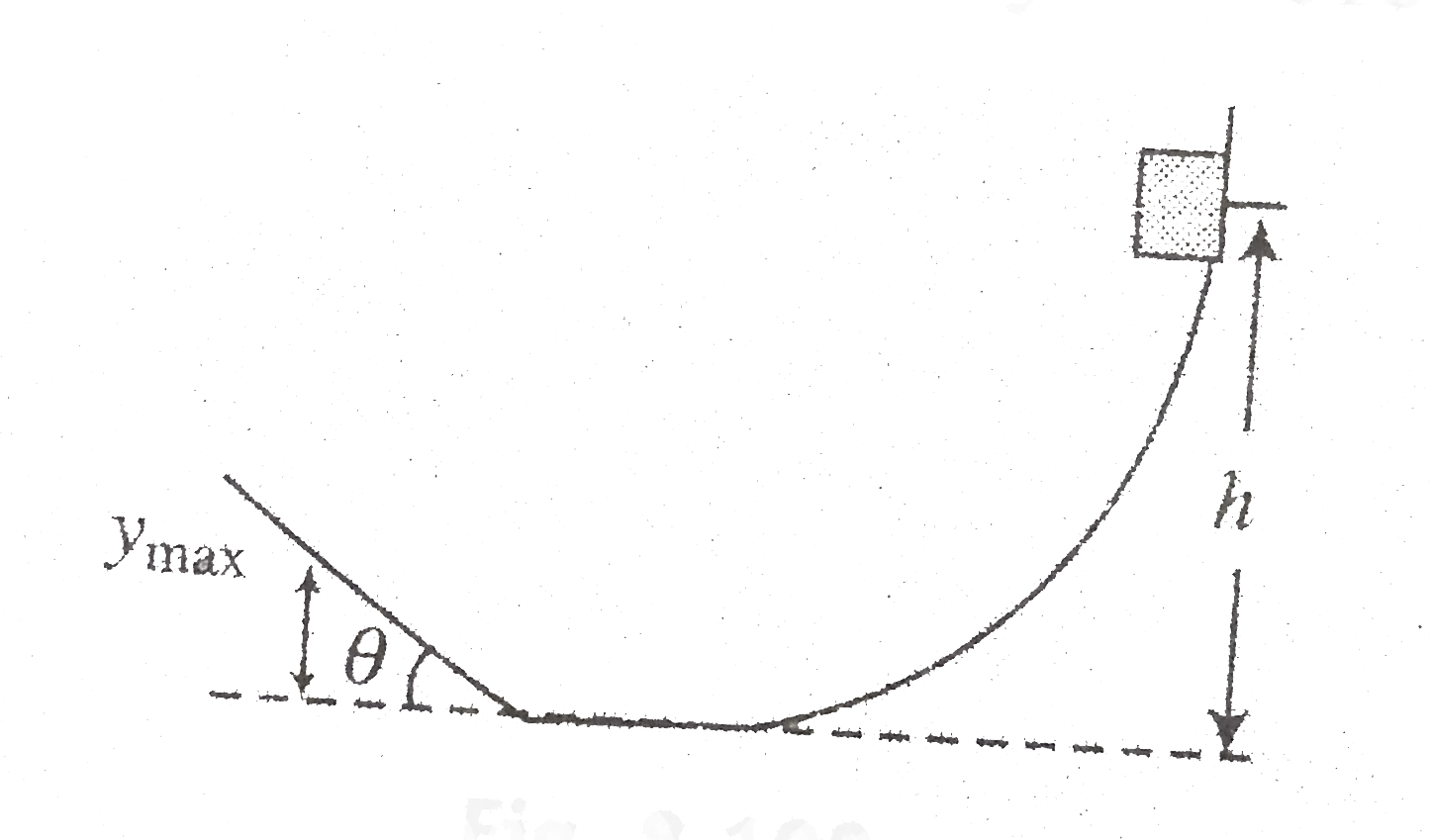A block slides down an incline of angle 30∘ with an acceleration of g/4 Find the coefficient of kinetic friction .
To solve the problem of finding the coefficient of kinetic friction (μk) for a block sliding down an incline at an angle of 30 degrees with an acceleration of g/4, we can follow these steps:
1. Identify the Forces Acting on the Block:
- The gravitational force acting on the block is mg.
- The component of gravitational force acting parallel to the incline is mgsinθ.
- The component of gravitational force acting perpendicular to the incline is mgcosθ.
- The frictional force opposing the motion is Fk=μkN, where N is the normal force.
2. Set Up the Equation of Motion:
- According to Newton's second law, the net force acting along the incline is equal to mass times acceleration:
mgsinθ−Fk=ma
- Here, a=g4 and θ=30∘.
3. Substitute Known Values:
- Substitute θ=30∘ into the equation:
mgsin30∘−Fk=m⋅g4
- We know that sin30∘=12:
mg⋅12−Fk=m⋅g4
- This simplifies to:
mg2−Fk=mg4
4. Rearranging the Equation:
- Rearranging gives:
Fk=mg2−mg4
- To combine the terms, convert mg2 to have a common denominator:
Fk=2mg4−mg4=mg4
5. Normal Force Calculation:
- The normal force N is equal to the perpendicular component of the gravitational force:
N=mgcosθ
- For θ=30∘, cos30∘=√32:
N=mg⋅√32
6. Frictional Force in Terms of Normal Force:
- The frictional force can also be expressed as:
Fk=μkN
- Substituting for N:
Fk=μk(mg⋅√32)
7. Equating the Two Expressions for Frictional Force:
- Set the two expressions for Fk equal to each other:
mg4=μk(mg⋅√32)
8. Canceling mg:
- Since mg is common on both sides, we can cancel it out (assuming mg≠0):
14=μk⋅√32
9. Solving for μk:
- Rearranging gives:
μk=14⋅2√3=12√3
- To express this in a more standard form:
μk=√36≈0.2887
Final Answer:
The coefficient of kinetic friction μk is approximately 0.2887.
- The gravitational force acting on the block is mg.
- The component of gravitational force acting parallel to the incline is mgsinθ.
- The component of gravitational force acting perpendicular to the incline is mgcosθ.
- The frictional force opposing the motion is Fk=μkN, where N is the normal force.
- According to Newton's second law, the net force acting along the incline is equal to mass times acceleration:
mgsinθ−Fk=ma
- Here, a=g4 and θ=30∘.
- Substitute θ=30∘ into the equation:
mgsin30∘−Fk=m⋅g4
- We know that sin30∘=12:
mg⋅12−Fk=m⋅g4
- This simplifies to:
mg2−Fk=mg4
- Rearranging gives:
Fk=mg2−mg4
- To combine the terms, convert mg2 to have a common denominator:
Fk=2mg4−mg4=mg4
- The normal force N is equal to the perpendicular component of the gravitational force:
N=mgcosθ
- For θ=30∘, cos30∘=√32:
N=mg⋅√32
- The frictional force can also be expressed as:
Fk=μkN
- Substituting for N:
Fk=μk(mg⋅√32)
- Set the two expressions for Fk equal to each other:
mg4=μk(mg⋅√32)
- Since mg is common on both sides, we can cancel it out (assuming mg≠0):
14=μk⋅√32
- Rearranging gives:
μk=14⋅2√3=12√3
- To express this in a more standard form:
μk=√36≈0.2887
The coefficient of kinetic friction μk is approximately 0.2887.
Similar Questions
Knowledge Check
- Question 1 - Select One
A body is sliding down an inclined plane forming an angle 30∘ with the horizontal. If the coefficient of friction is 0.3 then acceleration of the body is
A1.25ms−2B2.35ms−2C3.4ms−2D4.9ms−2 - Question 2 - Select One
A body is sliding down an inclined plane forming an angle 30∘ with the horizantal. If the coefficient of friction is0.3 then acceleration of the body is
A1.25.ms−2B2.35ms−2C3.4ms−2D4.9ms−2 - Question 3 - Select One
A block of mass 1 kg slides down on a rough inclined plane of inclination 60∘ starting from its top. If the coefficient of kinetic friction is 0.5 and length of the plane is 1 m , then work done against friction is (Take g=9.8m/s2)
A9.82 JB4.94 JC2.45 JD1.96 J
(a) A block slides down an incline of angle 45∘ with an acceleration g2√2. Find the friction coefficient.
(b) A block slides down at 45∘ inclined plane in twice the time it takes to slide down a smooth 45∘ incline. What is friction co-efficient between the block and the incline?
( c) A block slides down on a rough inclined plane of inclination 30∘ with constant velocity. If this block is projected up the plane with a velocity of 10m/s, then at what distance along the inclined plane , the block will come to rest?
(d) A body is launched up on a rough inclined plane of inclination θ. If time of ascent is half of time of descent, find the friction coefficient.View SolutionIn Fig. 6-52, two blocks, in contact, slide down an inclined plane AC of inclination 30∘ . The coefficient of kinetic friction between the 2.0 kg block and the incline is u1=0.20 and that between the 4.0 kg block and the incline is μ2=0.30. Find the magnitude of the acceleration.
 View Solution
View SolutionA block of mass m moves with constant speed down the inclined plane of inclination θ. Find the coefficient of kinetic friction.
 View Solution
View SolutionA block slides down a curved frictionless track and then up an inclined plane as in figure. The coefficient of kinetic friction between the block and incline is μk. Find the maximum height reached by the clock.
 View Solution
View SolutionA block of mass 5 kg slides down a rough inclined surface. The angle of inclination is 45∘. The coefficient of sliding friction is 0.20. When the block slides 10 cm, the work done on the block by force of friction is
View Solution


